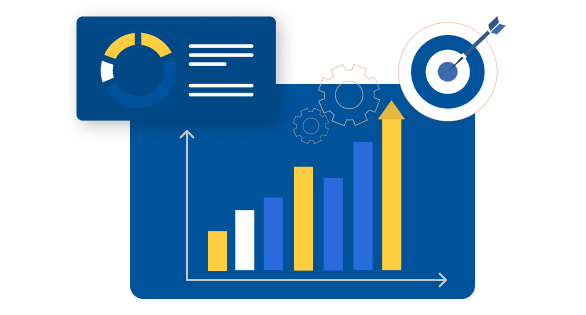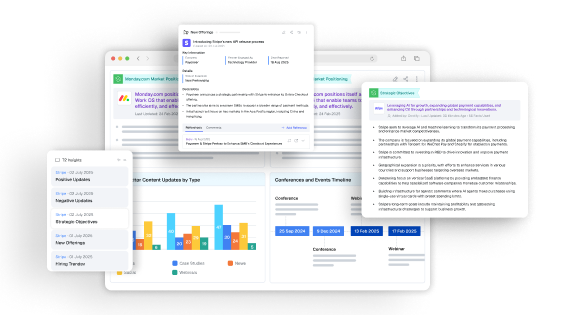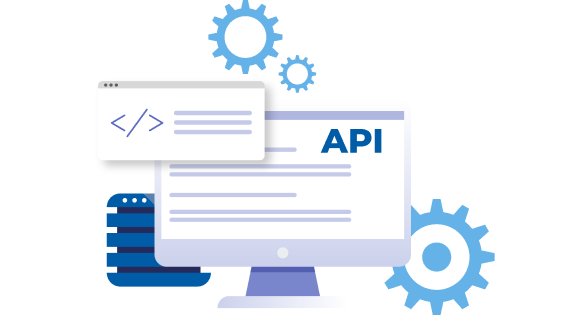Markets have become much more competitive as a result of the pandemic. The rapid adoption of technology has sustained businesses through the pandemic and now continues to redefine how we work, live and interact. Meanwhile, competition continues to heat up, with 90% of businesses reporting that their industry has become more competitive in the last three years. Consequently, Competitive intelligence (CI) has become an increasingly critical element of success for organizations. CI adoption is on the rise, and CI teams are growing: more than half (57%) of businesses have CI teams of two or more dedicated CI professionals, compared to just 37% of businesses two years ago. Organizations now rely on a number of methods to gather intelligence on their competitors, and while manual, ad-hoc CI processes still exist, companies are quickly shifting to modern CI processes backed by advanced competitive intelligence software, as they grasp the value of competitor tracking software and embrace it.
Online competitor tracking and website tracking is one of the key activities for CI teams irrespective of the level of maturity of the CI function. And for good reason too. Your competitor websites are a gold mine of actionable intelligence such as messaging and positioning changes, executive changes, pricing changes, and/or product feature updates to name a few. Even the privacy policies and terms & conditions can reveal insights about your competitors. According to Contify’s Benchmark Report for B2B Marketers, competitors’ websites are rated as one of the top sources of competitive intelligence data.
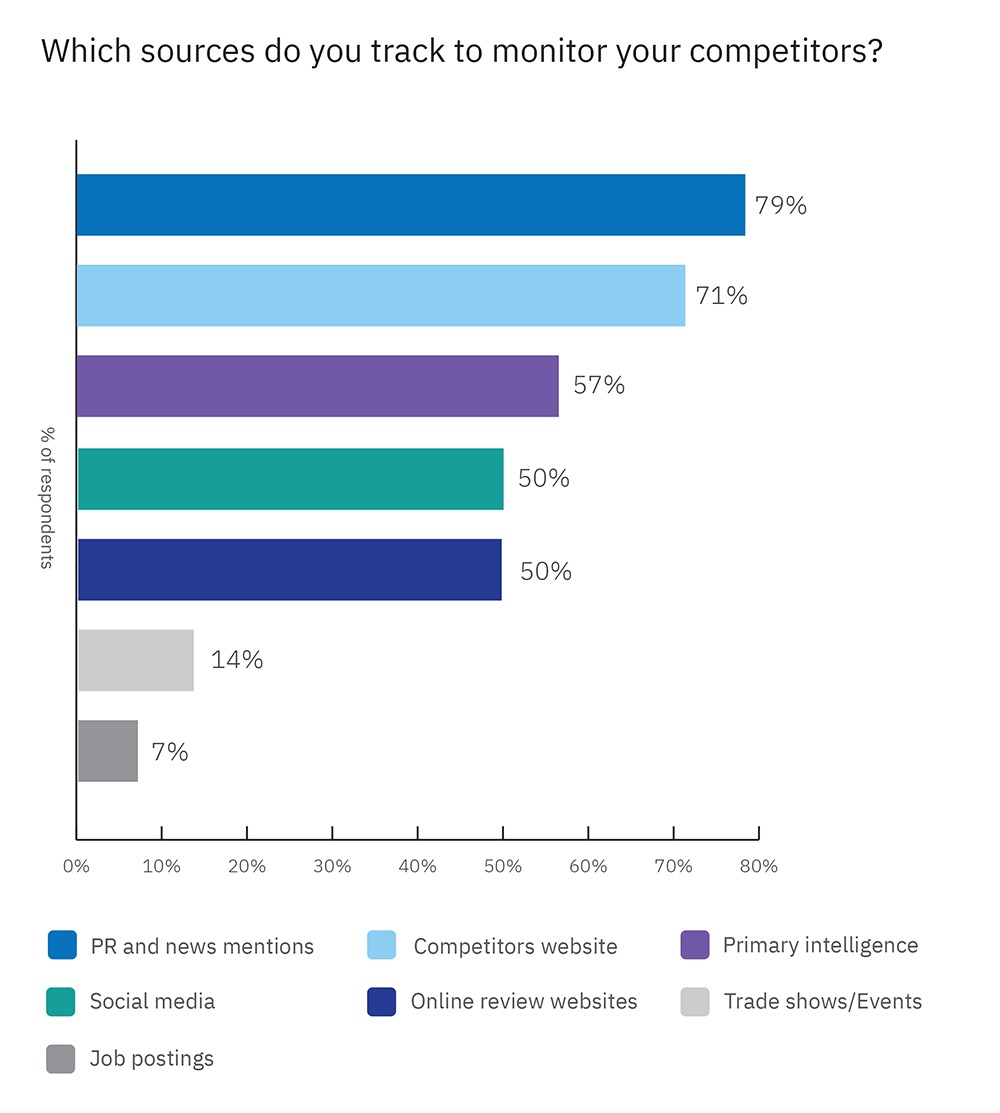
In this article, let us understand the benefits of tracking competitors’ website changes, identify which website changes you should focus on, and of course, the best way to track your competitors’ website changes. Let’s begin.
Why should you track your competitors’ website changes and what should you be tracking? (with examples)

The most evident answer is because you want to know what your competitors are doing, or planning to do next. However, tracking competitor website changes offers many more benefits than the obvious one above. Without further ado, let us have a look at the benefits of tracking competitors’ website changes.
1. Pre-empt Competitor Strategies
Changes in the messaging/positioning on your competitor’s website suggest a shift in their marketing/branding strategy. Tracking competitor websites will apprise you whenever they refine messaging, value propositions, and/or selling points, allowing you to pre-empt their strategies. It is a signal for you to start planning your counter-strategy. For example, if a competitor changes their positioning from “UK’s Favourite Luxury Soap” to “Europe’s Favourite Luxury Soap”, it means that they’re looking to expand continentally. When analyzing positioning and messaging changes, focus on how the content has changed, i.e. is the tone now formal, casual, or bold? Has their primary target audience changed? Have their CTAs changed? For example, has “View a Demo” changed to “Get Started” in order to attract customers’ curiosity? Key areas to track to identify positioning/messaging changes include the Homepage, About Us section, etc. Have a look at the example below.
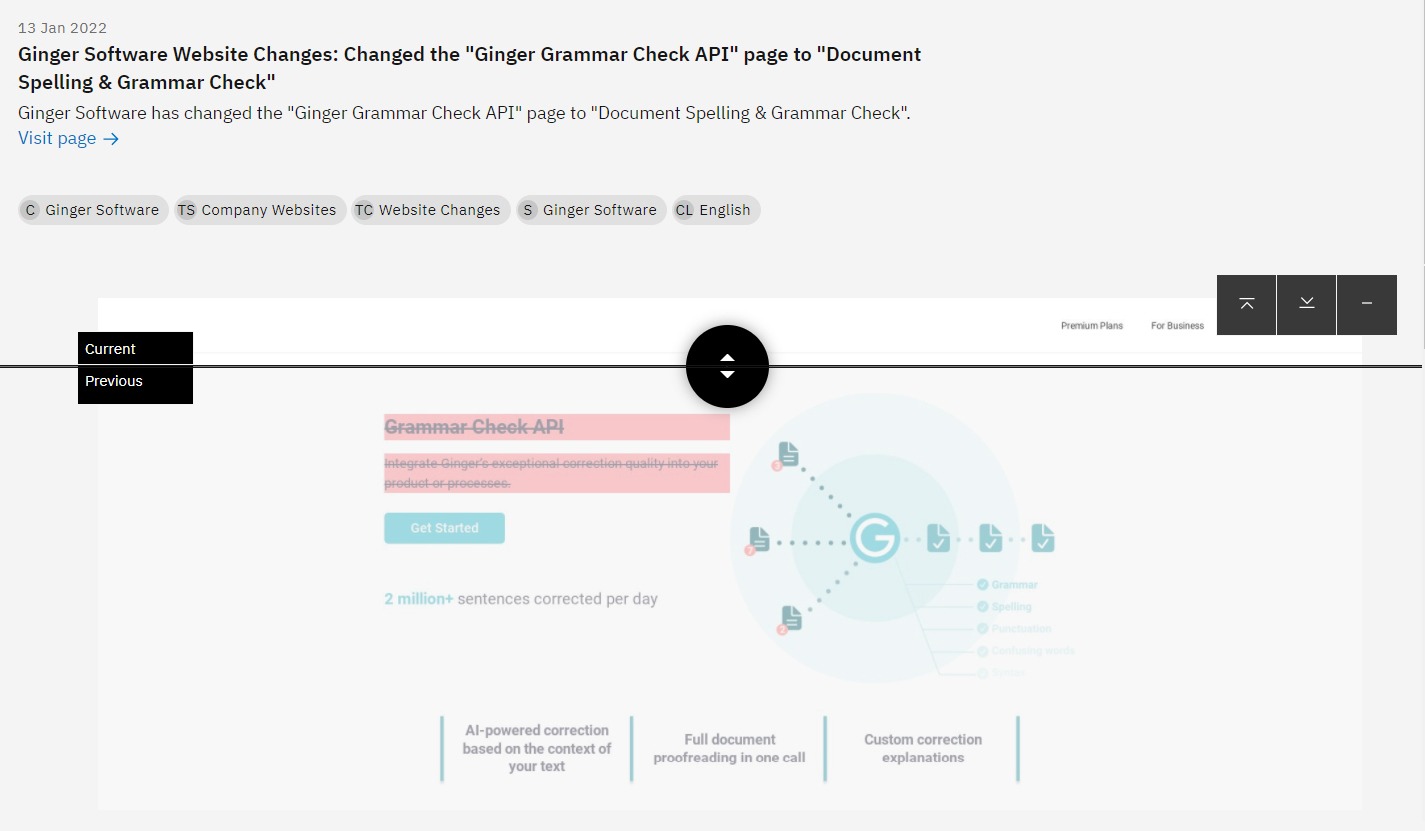
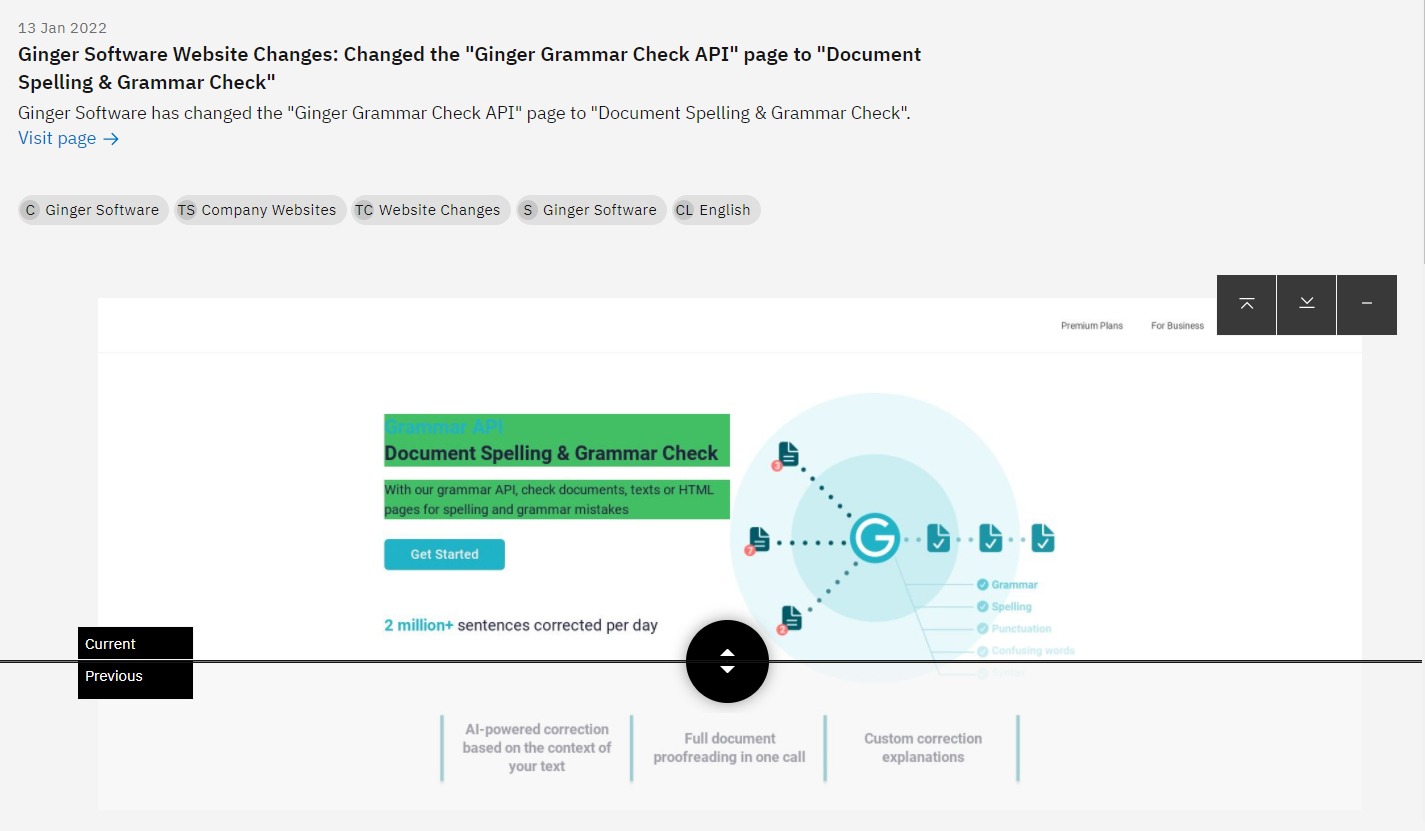
2. Understand Competitors’ Trajectory
The Careers or Jobs page is an important part of your competitor’s website to keep an eye on and track changes. Why? Because jobs being added or removed from the Careers section indicated that the company is growing its team, has granted an employee a promotion, has terminated an employee, or is expanding into new verticals or product lines. These changes provide insight on the particular function or department the company is focusing on, as well as their budget for it. Always remember to investigate new additions to competitors’ organizations particularly if there are leadership changes. Using a website change tracker makes this effortless.
3. Identify Weak Spots
Did you notice something that mysteriously appeared and disappeared from your competitors’ websites in a matter of days? Perhaps an offer? Or marketing collateral? If so, you might have identified something they weren’t confident enough with – a weak spot – and can probably exploit it. Or, for example, you notice your competitors have added or removed a particular service.
This is where track changes to a website or a track changes website tool comes in handy.
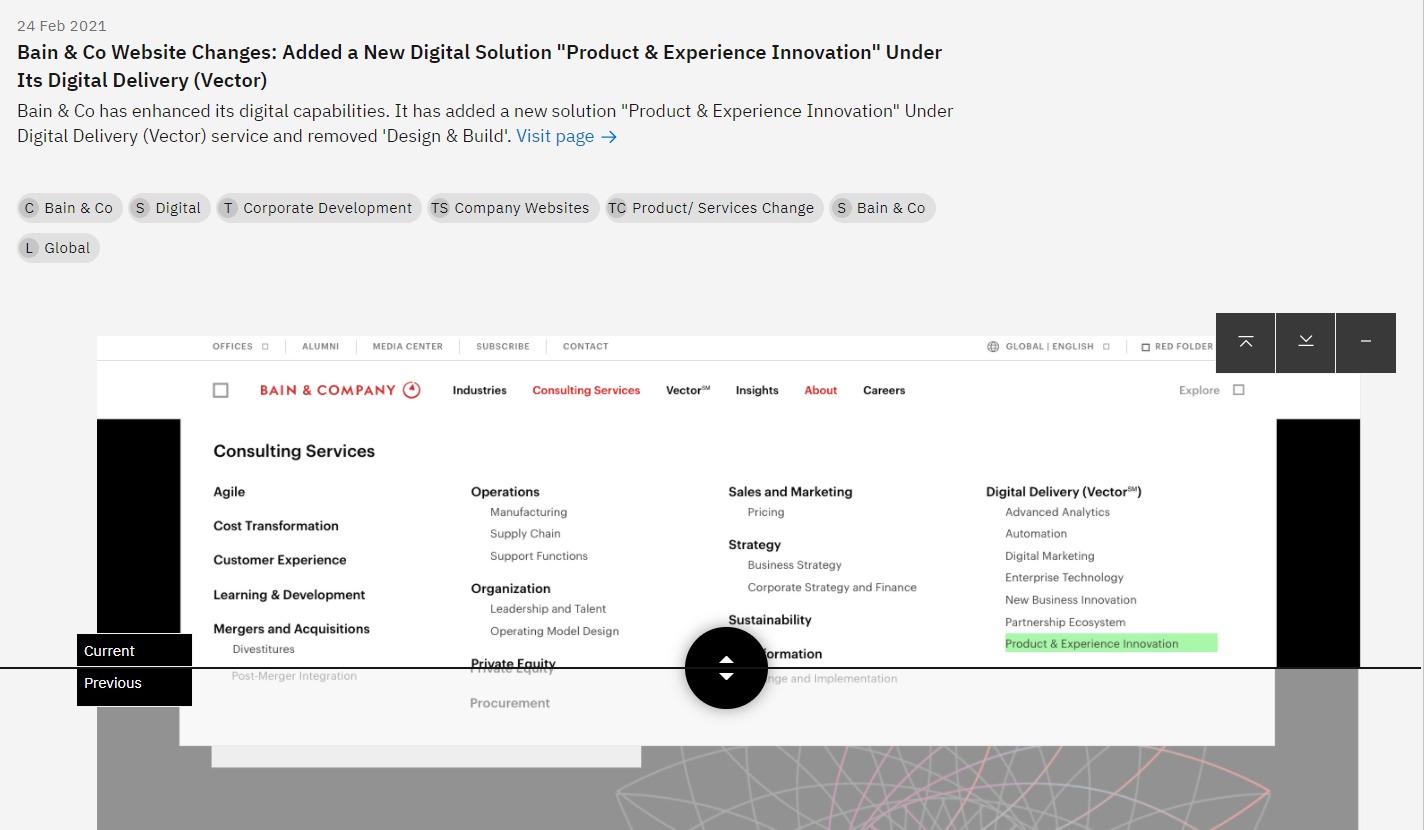
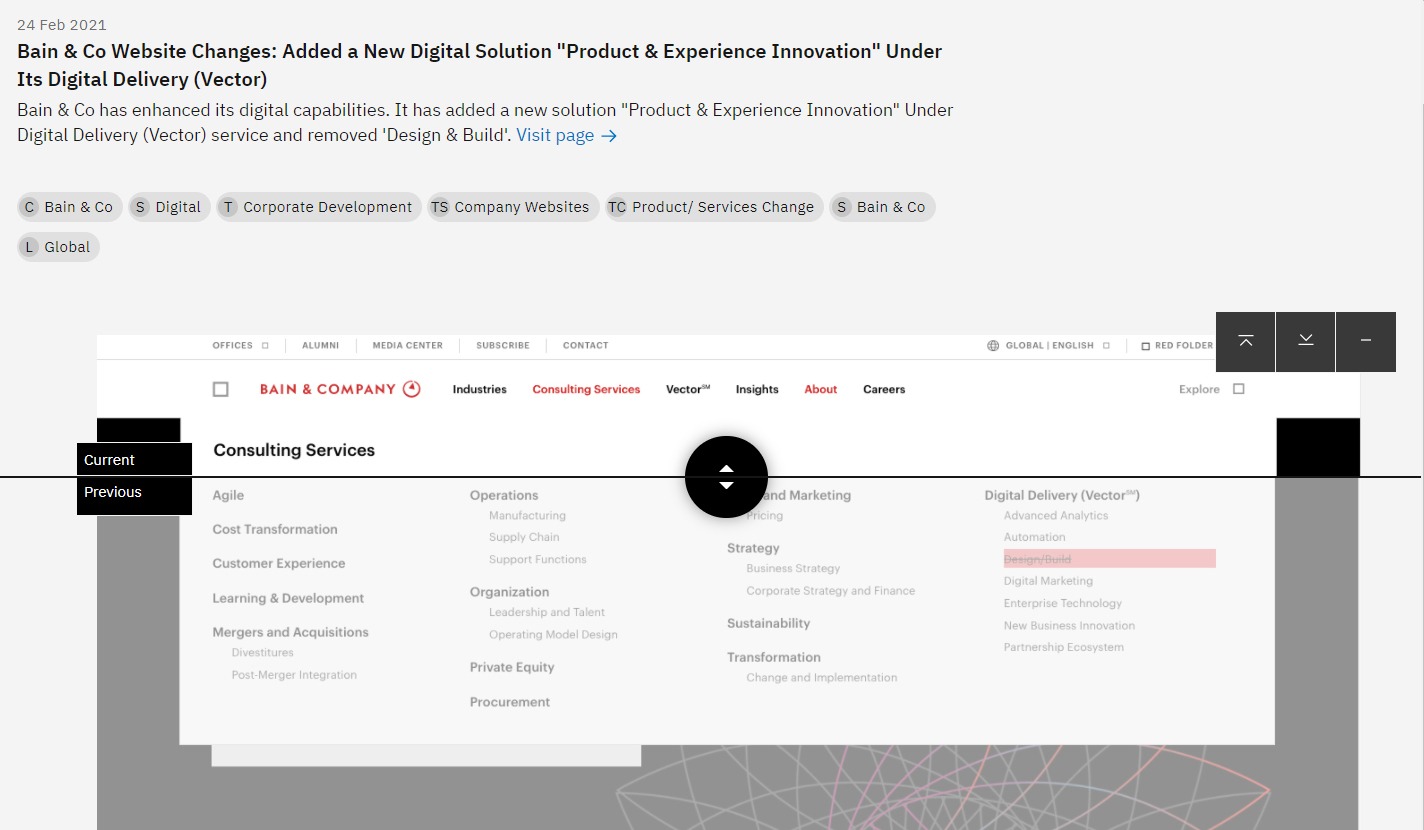
Now is the time for you to push that particular service or feature in the market, so you can get those unhappy customers to your camp.
4. Stay Competitive
Staying competitive is one of the classic key success factors in business, however, it isn’t easy. Nevertheless, a great way to spot potential market gaps is to track competitors’ pricing, product, or feature changes/upgrades. Staying up to date with your competitors’ new features and uncovering all their customers’ advantages and benefits helps you to plan how you can further develop your service/product by staying relevant to the competitive market. In particular, keep the following things in mind:
– Have there been any product name changes?
– Have there been any supporting image/screenshot/video/demo updates?
– Are there any new specific features or benefits listed?
– Has the pricing changed or is it now available (if it wasn’t earlier)?
– Do they now offer a free trial or freemium offering (SaaS)?
These are all areas where using tools to track competition website changes can give you a significant edge.
Check out this blog if you wish to learn about understanding competitors’ pricing strategies in detail.
To increase your chances of being the preferred seller or supplier, you need to adjust your own pricing and product features to offer competitive rates and stay relevant to the market by providing features and services that your target audience wants. You could even highlight the things you provide that your competitors don’t – it could be the deciding factor in customers choosing you over them. Have a look at the example below.
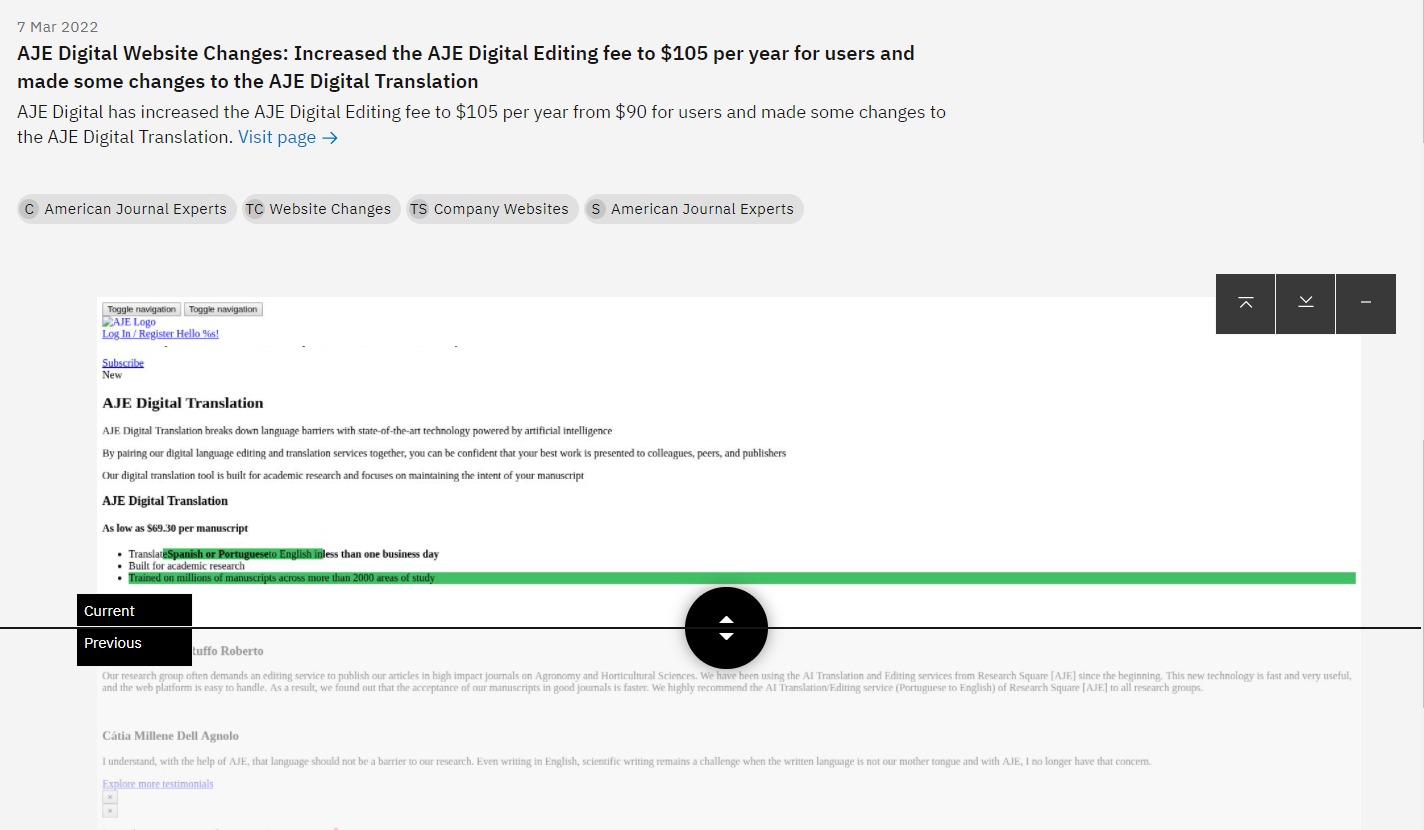
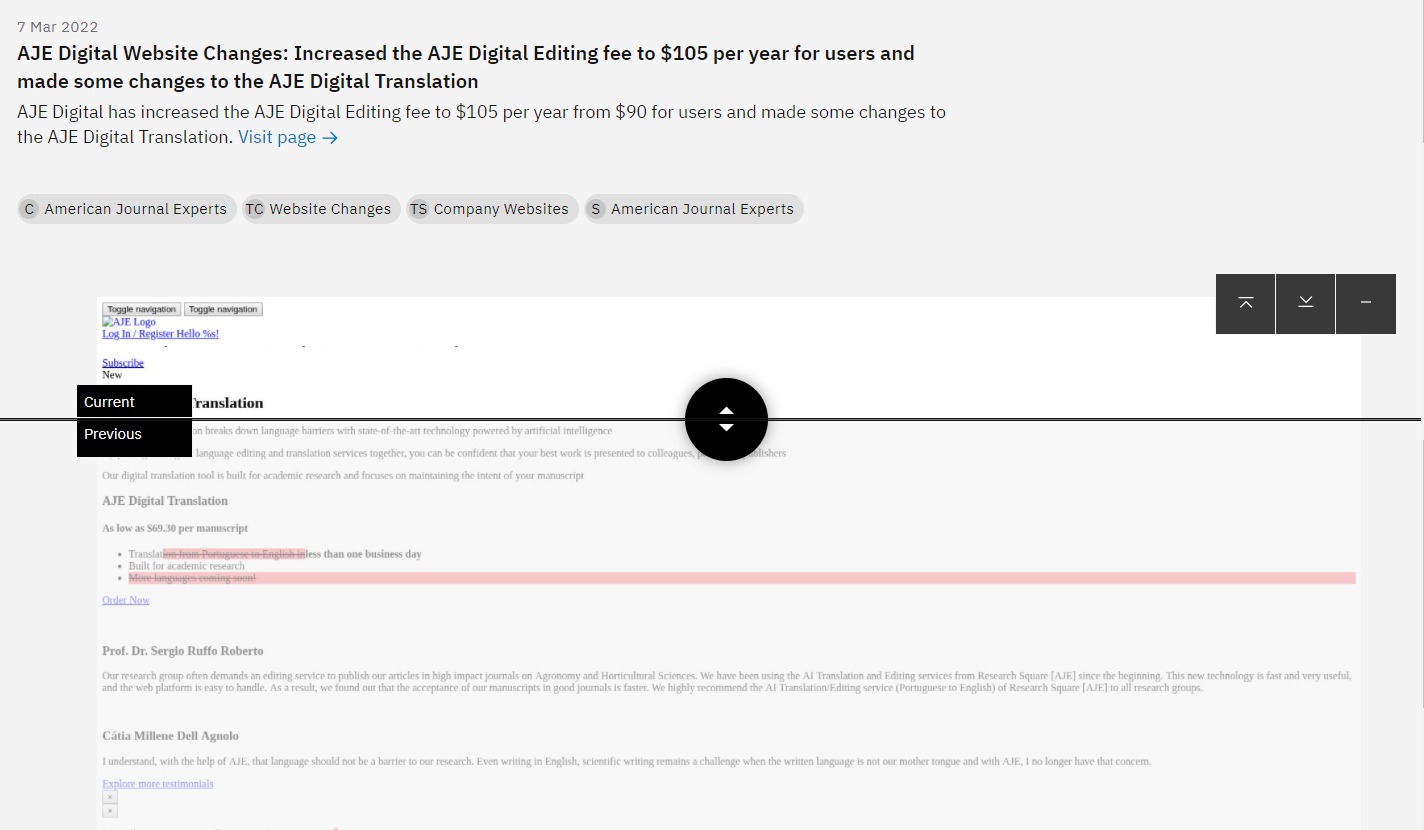
5. Keep Up On Market Trends
The way we do business is constantly changing – especially in the age of social media. New trends pop up all the time. Your competitors may be catching on to things before you, so they could be a great source of information on the market. racking competitor website changes of multiple competitors can be a very valuable source of market intelligence. For example, a recent article on LinkedIn, titled “Please Remove ‘Diversity, Equity and Inclusion (DE&I)’ From Your Website”, sparked a trend that led to a number of companies removing the DE&I section from their websites. (See image below)
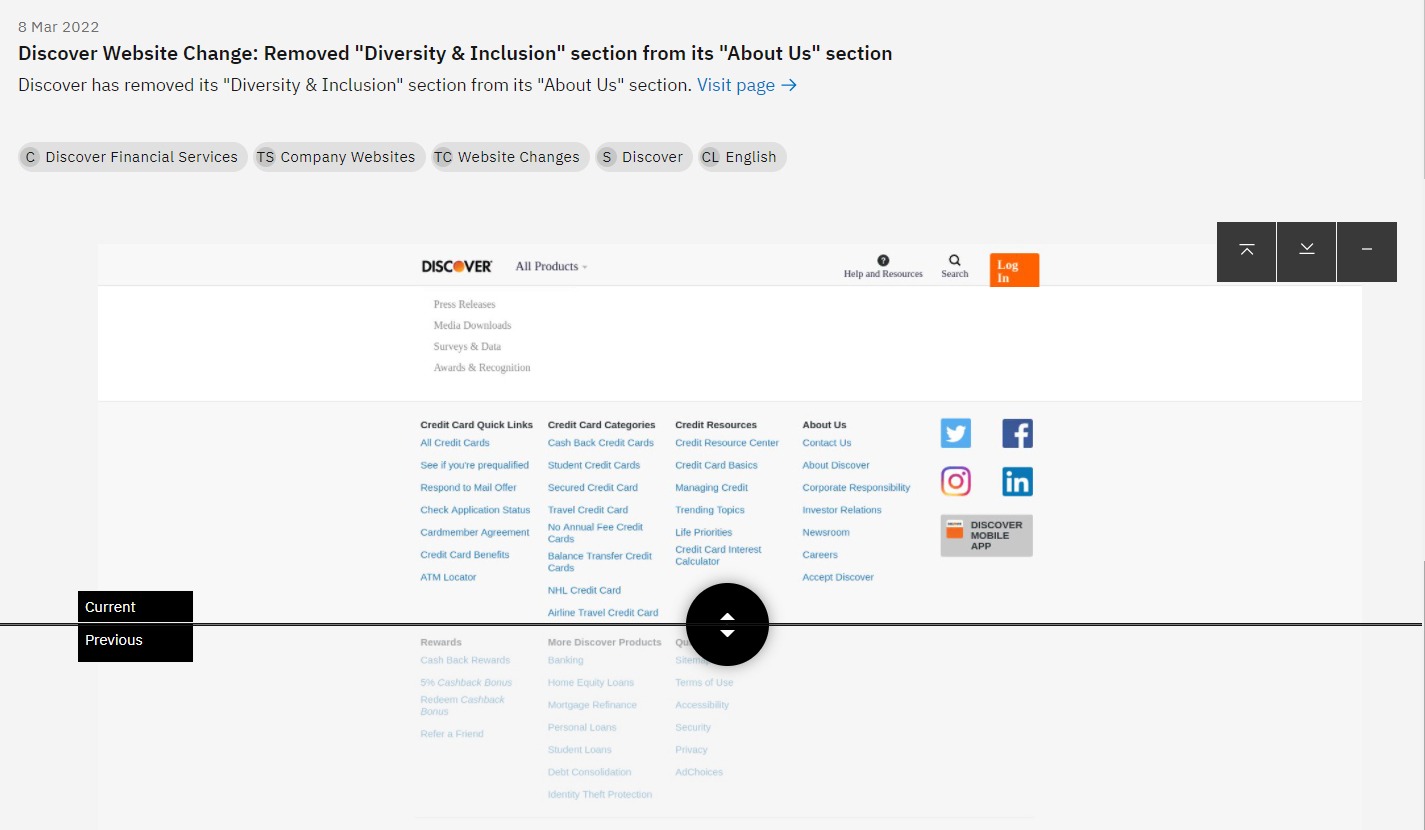
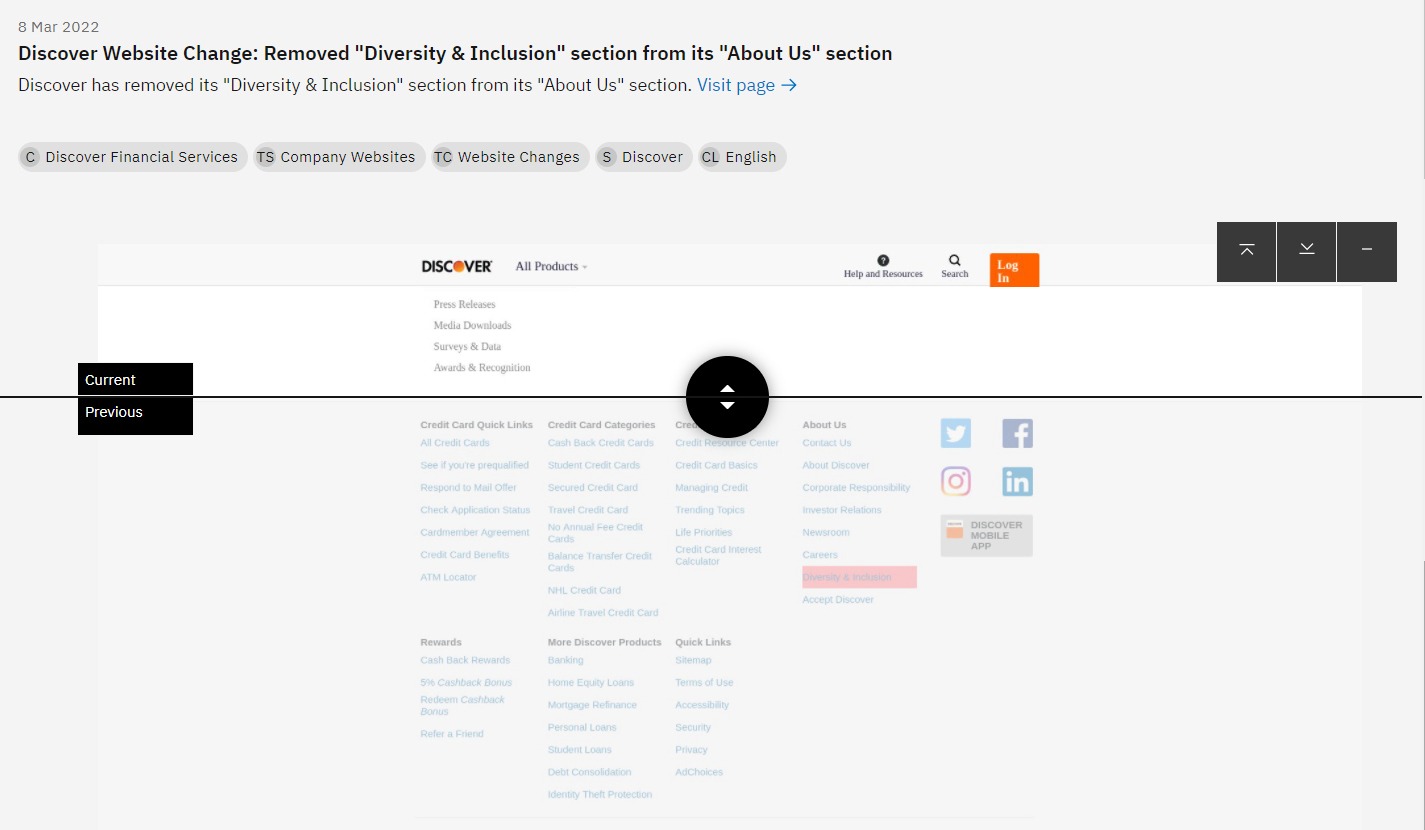
What’s the best way to track competitors’ website changes?

While competitor website tracking is a great method to gather competitive intelligence, it comes with its own set of challenges. It’s an effort-intensive exercise if it is being done manually. Website changes are usually very minuscule when compared to parts that have not changed.
Also, unlike news and press releases, there are no active alerts and triggers for changes on the competitor’s website. If you’re wondering how to monitor competitors websites or how to compare websites to competitors, you’re not alone.
Most organizations would agree that manually tracking the website changes of each of their competitors is impractical and unfeasible. Why? Because: One, these are not publicly available like news, press releases, blogs, etc., and two, tracking these updates manually (and delivering tangible value) is an impossible task for any CI analyst, as nobody knows when these changes are being made.
Thus, a tech-led approach to website change tracking is required, because
– A manual approach will fail/frustrate/cost-more-than-benefit
– Tech helps track more pages and more competitors with lesser efforts
– Tech helps track competitor websites on daily basis rather than weekly/monthly
In addition, a tech-led approach will deliver deeper and timely/early insights, i.e. more competitors + a broader range of changes + reduced lag between actual change and your counteraction on that change.
A tech-led approach involves utilizing a competitive intelligence tool such as Contify. Contify’s website change tracker feature enables users to track and capture any changes that competitors might make to their websites including messaging changes, pricing changes, feature upgrades, new pages, etc. You can know more about Contify’s website change tracker here.
Different competitive information is available on the web in different layers, for example:
– News: Very significant events
– Press Announcements: Significant events, leadership hiring, new offerings, awards, etc.
– Social Media Posts: Events, new office pictures, HR initiatives, etc.
– Job Postings: Skills, focus, etc.
– Reviews: SWOT Analysis
– Website changes: Messaging/ Positioning changes. Terms & Conditions (new cookie policy), pricing and packing changes, help support documents (insights about UI, changes in features, new integrations, etc.)
All this is available in one comprehensive market and competitive intelligence solution. Do you see value in using a purpose-built technology solution that radically transforms the approach to not just competitor website changes, but competitive intelligence? If yes, why not try Contify? Get your 7-day free trial here.
Frequently asked questions
How often should I monitor changes on competitor websites?
Ideally, you should track competitor websites daily or at least weekly. Manual monitoring may miss subtle but strategic edits, which is why using a website change tracker or competitor tracking software helps you detect real-time updates with minimal effort.
Can website tracking really help in predicting competitor strategies?
Yes, changes in tone, calls to action, or product positioning on competitor websites often reflect new strategic directions. Being able to track changes website signals like these allows you to pre-emptively adjust your offerings or messaging.
What are the limitations of manual competitor website tracking?
Manual methods are time-consuming, prone to error, and can’t scale across multiple competitors. They also lack the ability to alert you in real-time. That’s why most CI professionals adopt automated website change tracking tools to monitor competitors efficiently, such as Contify.



